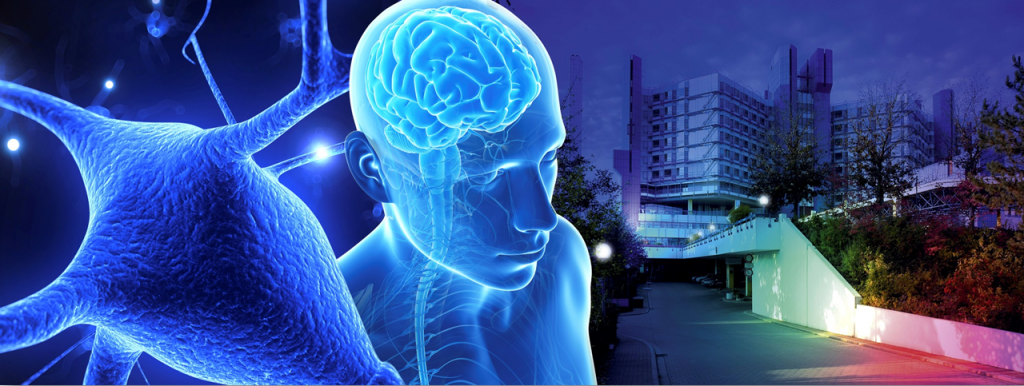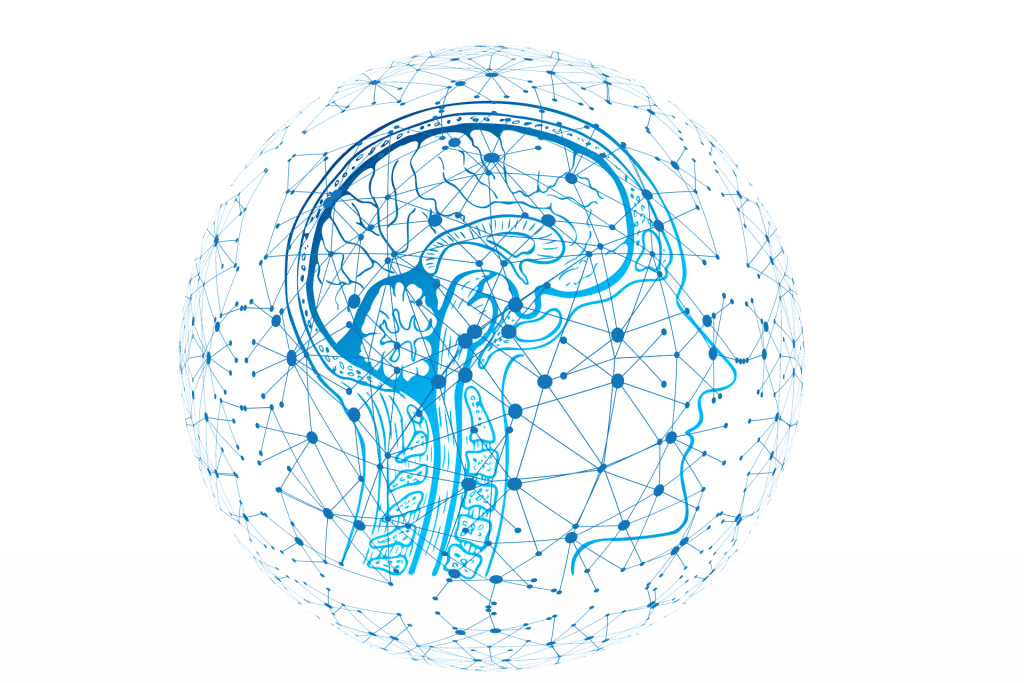

Trigeminal neuralgia describes a facial pain in the supply area of the cranial nerve Nervus trigeminus. The nerve has three branches (frontal branch, cheek and lower jaw) where the pain typically occurs. The cause of typical trigeminal neuralgia is a vascular contact of the nerve. This contact leads to chronic irritation and damage to the “insulating layer” (Schwann cells) of the nerve.
Damage to nerve insulation with only minimal stimuli results in massive pain that can often last several minutes. Patients suffering from this chronic disease have a strongly reduced quality of life, which very often leads to depression.
In case of trigeminal neuralgia, a detailed medical history as well as extensive interdisciplinary diagnostics by neurosurgeons, neurologists, oral and maxillofacial surgeons/dentists and ENT physicians must always be performed.
In addition, neuroradiological imaging needs to be conducted in an MRI (‘tube’). Thin-slice MRI images (with a layer thickness of 1 mm or less with contrast agent, native and T2, as well as CISS special sequences) are required to depict the brain nerves and to detect vascular nerve contact. Unfortunately, vascular nerve contacts are often not mentioned in the written report. A thin-slice CT of the skull base and petrous bone (a section of the temporal bone) is usually performed to assess the bony structure.
A distinction is made between typical and atypical trigeminal neuralgia. The first treatment in both cases should always be a trial of drugs, which initially only treats the symptoms. The actual cause of typical trigeminal neuralgia, however, can only be resolved surgically. In this case, a neurovascular decompression according to Janetta (upholstery of the vessel with a small Teflon cushion to release the vascular-nerve contact) is performed by means of a minimally invasive procedure in the area of the cerebellopontine angle. In most cases, complete freedom of pain can be achieved.
Prof. Feigl always performs such procedures using navigation and endoscopy support as well as minimally invasive approaches. During the entire operation, so-called intraoperative monitoring (monitoring of nerve flows) is carried out to ensure that all nerves are intact and that the operation does not cause any damage to the brain nerves. Patients who have underwent minimally invasive Jannetta surgery report a regaining of their livability and a new attitude towards life.
Trigeminal neuralgia, which occurs in context of multiple sclerosis, can also be treated surgically if there is clear vascular-nerve contact. Alternatively, radiosurgical treatment and thermocoagulation (a minimally invasive procedure for pain management) are available as therapeutic options. Prof. Feigl performs the radiosurgical treatment on his patients at the Cyberknife Centre Southwest in Göppingen.
Trigeminal neuralgia describes a facial pain in the supply area of the cranial nerve Nervus trigeminus. The nerve has three branches (frontal branch, cheek and lower jaw) where the pain typically occurs. The cause of typical trigeminal neuralgia is a vascular contact of the nerve. This contact leads to chronic irritation and damage to the “insulating layer” (Schwann cells) of the nerve.
Damage to nerve insulation with only minimal stimuli results in massive pain that can often last several minutes. Patients suffering from this chronic disease have a strongly reduced quality of life, which very often leads to depression.
In case of trigeminal neuralgia, a detailed medical history as well as extensive interdisciplinary diagnostics by neurosurgeons, neurologists, oral and maxillofacial surgeons/dentists and ENT physicians must always be performed.
In addition, neuroradiological imaging needs to be conducted in an MRI (‘tube’). Thin-slice MRI images (with a layer thickness of 1 mm or less with contrast agent, native and T2, as well as CISS special sequences) are required to depict the brain nerves and to detect vascular nerve contact. Unfortunately, vascular nerve contacts are often not mentioned in the written report. A thin-slice CT of the skull base and petrous bone (a section of the temporal bone) is usually performed to assess the bony structure.
A distinction is made between typical and atypical trigeminal neuralgia. The first treatment in both cases should always be a trial of drugs, which initially only treats the symptoms. The actual cause of typical trigeminal neuralgia, however, can only be resolved surgically. In this case, a neurovascular decompression according to Janetta (upholstery of the vessel with a small Teflon cushion to release the vascular-nerve contact) is performed by means of a minimally invasive procedure in the area of the cerebellopontine angle. In most cases, complete freedom of pain can be achieved.
Prof. Feigl always performs such procedures using navigation and endoscopy support as well as minimally invasive approaches. During the entire operation, so-called intraoperative monitoring (monitoring of nerve flows) is carried out to ensure that all nerves are intact and that the operation does not cause any damage to the brain nerves. Patients who have underwent minimally invasive Jannetta surgery report a regaining of their livability and a new attitude towards life.
Trigeminal neuralgia, which occurs in context of multiple sclerosis, can also be treated surgically if there is clear vascular-nerve contact. Alternatively, radiosurgical treatment and thermocoagulation (a minimally invasive procedure for pain management) are available as therapeutic options. Prof. Feigl performs the radiosurgical treatment on his patients at the Cyberknife Centre Southwest in Göppingen.

